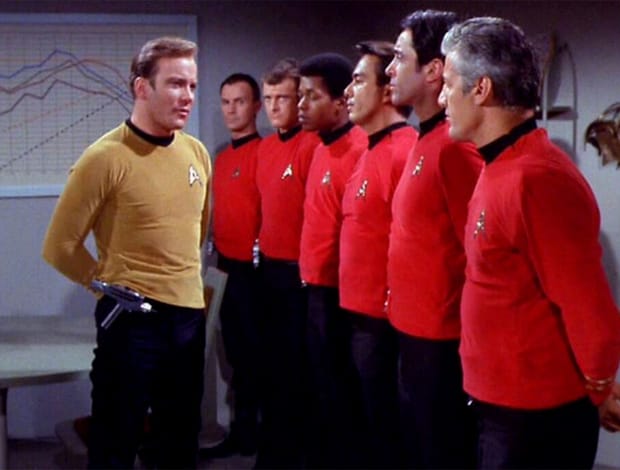WC '16 Contest 2 S2 - Away Mission
View as PDFWoburn Challenge 2016-17 Round 2 - Senior Division

During its travels, the Starship Enterprise has come across a rather
curious planet which appears to contain vast deposits of kironide, a
rare and valuable mineral. Captain Kerk has ordered
of his crewmembers to go on an away mission to the planet's
surface in order to confirm the sensors' readings. If all goes well,
they'll be able to locate the kironide and collect some samples… before
anything on the planet collects them as samples.
Each of the crewmembers will need to be outfitted with a shirt, of
course. It's standard Starfleet procedure for shirts to be manufactured
on demand, with the use of a shirt replicator. The replicator is fed
three Colour Component Chips (CCCs) - a red, green, and blue one - which
determine the colour of the resulting shirt. Each CCC, in addition to
corresponding to a particular colour component (either red, green, or
blue), is encoded with an integral value between
and
, inclusive.
Kerk has
red CCCs with values
at his disposal. He
similarly has
green CCCs with values
, and
blue
CCCs with values
.
Kerk may feed the CCCs into the shirt replicator in any combinations
he'd like to in order to create shirts, as long as the replicator is
always given CCCs corresponding to all three different colour components
at a time, and each of the
CCCs is only used once.
A shirt is considered "red" if its red CCC's value is strictly larger
than its other two CCCs' values. In other words, if a shirt was produced
using red, green, and blue CCCs with values ,
, and
, then it's
red if both
and
.
Unfortunate accidents have a way of happening to crewmembers wearing red
shirts, so producing as few red shirts as possible would be beneficial.
However, a strange anomaly has recently struck the Enterprise, which may
be having unusual psychological effects on its crew, based on the value
of
. If
, then Kerk has remained resilient
and is determined to arrange his CCCs such that as few as possible of
the
shirts are red. Otherwise, if
, then Kerk's psychological
state has been compromised, and he'll instead maximize the number of red
shirts produced!
In either case, please help estimate the number of "accidents" which might occur on the away mission by determining how many of the crewmembers will end up wearing red shirts.
In test cases worth of the points,
and
for
(and in exactly
of these,
).
In test cases worth another of the points,
(and in
exactly
of these,
).
In exactly of the remaining test cases,
.
Input Specification
The first line of input consists of two space-separated integers and
.
The next line consists of space-separated integers
.
The next line consists of space-separated integers
.
The next line consists of space-separated integers
.
Output Specification
Output a single integer - either the minimum possible number of red
shirts that must be made if , or the maximum possible number that
can be made if
.
Sample Input 1
3 1
200 0 123
0 42 122
5 200 99Sample Output 1
1Sample Explanation 1
One optimal set of shirts is as follows (with each one notated as ):
(200, 0, 200)
(0, 42, 99)
(123, 122, 5)Of these, only the last one is red. Unfortunately, it's impossible for none of the shirts to be red.
Sample Input 2
3 2
200 0 123
0 42 122
5 200 99Sample Output 2
2Sample Explanation 2
One optimal set of shirts is as follows:
(200, 0, 99)
(0, 42, 200)
(123, 122, 5)
Comments